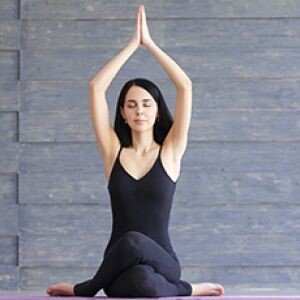Being a yogi , you must have heard at least once in a class that yoga is more than simply fitness. Of course, some styles of yoga can be physically taxing and aid in the development of amazing strength, but there’s a hint of something more, something deeper, and something rooted in ancient wisdom, alongside the sweating and stretching.
With each passing day more and more people are joining and learning yoga which indeed had transformed the lives of many. However, as yoga has become a more accessible and modern practise, the ancient roots of yoga appear to be gradually fading amongst new genealogies.
PHILOSOPHY PROVIDES CONTEXT
It may appear at first glance that learning something so ancient is unimportant in today's modern and forward-thinking society, where yoga practises are combined with mindfulness, mind-body medicine, and progressive anatomy understandings.
Why would we want to look back at something cocooned in dogma and Sanskrit language, with all this new information and exhilarating advancement?
And the only reason to dig into some ancient history is because philosophy provides context. The ‘Ashtanga Yoga System; or ‘Eight Limbs of Yoga; is described in Patanjal’s Yoga Sutras as an eight-fold route leading to freedom. And it explains why yoga was created in the first place, what was going on in the world at the time, and where the meanings of yoga poses come from. It transports us to a time when the gods and goddesses were a part of everyday life, and where yoga was so revered that thousands of writings were written about it.
The Patanjali Yoga Sutras are a favourite source of inspiration and direction for modern yoga practitioners on how to live a balanced and ethical life both on and off the mat. Many of our understandings of the Yoga Sutras have been filtered through multiple commentators on the original verses, according to the history of the work.
Our interpretation of the eight limbs takes into account the historical context in which they were created before attempting to adapt them to modern life.
The Yoga Sutras of Patanjali (which are obligatory reading in most Yoga teacher training programmes) are considered to be a road map that leads you to Samadhi, which is sometimes referred to as bliss or enlightenment. Each of these eight limbs might be thought of as a rung or step on a ladder, with each level intensifying the yogic practise. It's critical to realise that this particular yogic practise. It's crucial to remember that yogic philosophy is just one of many; other philosophies include Buddhism and Tantra, both of which are as rich and fascinating.Starting with morals and guidelines and progressing via numerous meditation practises, techniques, and states, the practitioner is supposed to eventually arrive at Samadhi, the final limb of joy.
THE 8 LIMBS OF YOGA
• Yama
• Niyama
• Asana
• Pranayama
• Pratyahara
• Dharana
• Dhyana
• Samadhi
1. Yama: Yama is the first limb, and it refers to vows, disciplines, or practices that are primarily concerned with the world and our interactions with it. The five yamas (nonviolence, truthfulness, non-stealing, correct use of energy, and non-greed) are universal moral pledges and observances that apply to everyone and everything. These five morals apply to them, us, and everyone around us, regardless of where they come from, their social level, current life situation, or previous experience. Yama’s can be viewed of as little disciplines or constraints that we can all practice in order to be better individuals. These tiny disciplines, in turn, have a cascading effect, resulting in a more harmonious community and a more peaceful planet.
Ahimsa (non-violence),
Satya (truthfulness),
Asteya (non-stealing),
Brahmacharya (right use of energy), and Aparigraha (non-greed or non-hoarding).
2. Niyamas : “Ni” here denotes that these five observances are more about how we engage with ourselves, how we direct our consciousness inward to our own acts, and how those actions may affect those around us. While the yamas are universal, the niyamas are only for people who seek to further their personal and spiritual development.
Saucha (Cleanliness),
Santosha (Contentment),
Tapas ( Burning of desire),
Svadhyaya (Self-study or self-reflection),and Isvarapranidaha (Surrender to a higher power).
3. Asana : The physical part of yoga is the third step on the way to freedom, it refers to the seat you would assume for meditation. It is said in the practice of Asana that the posture for meditation should have the attributes of steadiness and ease, meaning that it should be sturdy enough to sit for a long time yet relaxed enough to allow the breath to flow easily.
Hundreds of physical postures and movements have been developed over thousands of years to aid in the clearing and revitalization of the body.
4. Pranayama : Prana is a Sanskrit word that means “energy” or “life source”. It can be used to express both the essence of life and the energy that pervades the cosmos around us. Prana is also used to describe the breath, and dealing with the way we breathe has a direct impact on the mind.
These strong techniques are a vital aspect of yoga, from the gentle practises of alternate nostril breathing to the more rigorous Kapalabhati and long breath retentions. Extended breath holding is reported to have been practised by the Buddha, and all physical yoga practises in pre-modern India were largely concerned with breathing techniques.
5. Prathyahara : Prathya means to 'withdraw’, and ahara refers to whatever we 'take in' on our own, such as the many sights, sounds, and odours our senses take in on a regular basis. When we sit for a formal meditation practise, we are inclined to focus on ‘drawing in' as the first thing we do when we think we are meditating. Focusing inward is a type of drawing within.
The five senses of smell, sound, sight, touch, and taste all contribute to the richness of life, but they can also pull our attention in different areas. An uncomfortable seat, a strong odour, or the beeping and buzzing of a mobile phone might make it difficult to focus on a meditation practise or simply being present in a discussion.
6. Dharana : It is the lingering moment of meditation in which the practitioner maintains their meditation object steadily, whether it is the breath, a mantra, a symbol, or a visualisation. It's easy to slip out of dharana and back into your thinking mind — you could notice this when you suddenly “realise” you’ve been meditating and are yanked out of it.
Dharana includes activities like candle gazing, visualisation, and focusing on the breath, and it’s this stage that many of us reach when we think we’re meditating.
7. Dhyana: The seventh limb is referred to “meditative absorption” which occurs when we become entirely absorbed in the subject of our meditation.
This is when we are truly meditating. All of the skills we learn in class, online, or from a teacher are only ways to assist each person calm, focus, and concentrate; the actual practise of meditation is not something we can actively ‘do’.
8. Samadhi : ‘Sama’ which means ‘same’ or ‘equal’, and ‘dhi’ which means ‘to see. It’s called realisation for a reason: achieving Samadhi is’nt about escape, flying away, or being ecstatically happy; it’s about realising the life that lies ahead of us. Many people think of enlightenment or bliss as a state that can be entered and exited. Free flowing consciousness is an excellent illustration of a Samadhi state, in which we are completely oblivious, completely focused on one thing, and completely content in the present now. Each day, you may have numerous moments of Samadhi, and the more we have via meditation and daily action, the closer we are to liberation.
After considerable study and reflection, I’ve come to the conclusion that the word “Samadhi” does not necessarily imply a fireworks show of delight and bliss, but rather a calm and humble serenity that is available to everyone. The Sanskrit word
‘sama’ denotes ‘same’ or ‘equal’; while the ‘dh’ refers to an understanding or connection, as previously mentioned. We can see that the ‘end’ has a new meaning with this new definition.
Nida Zakaria




